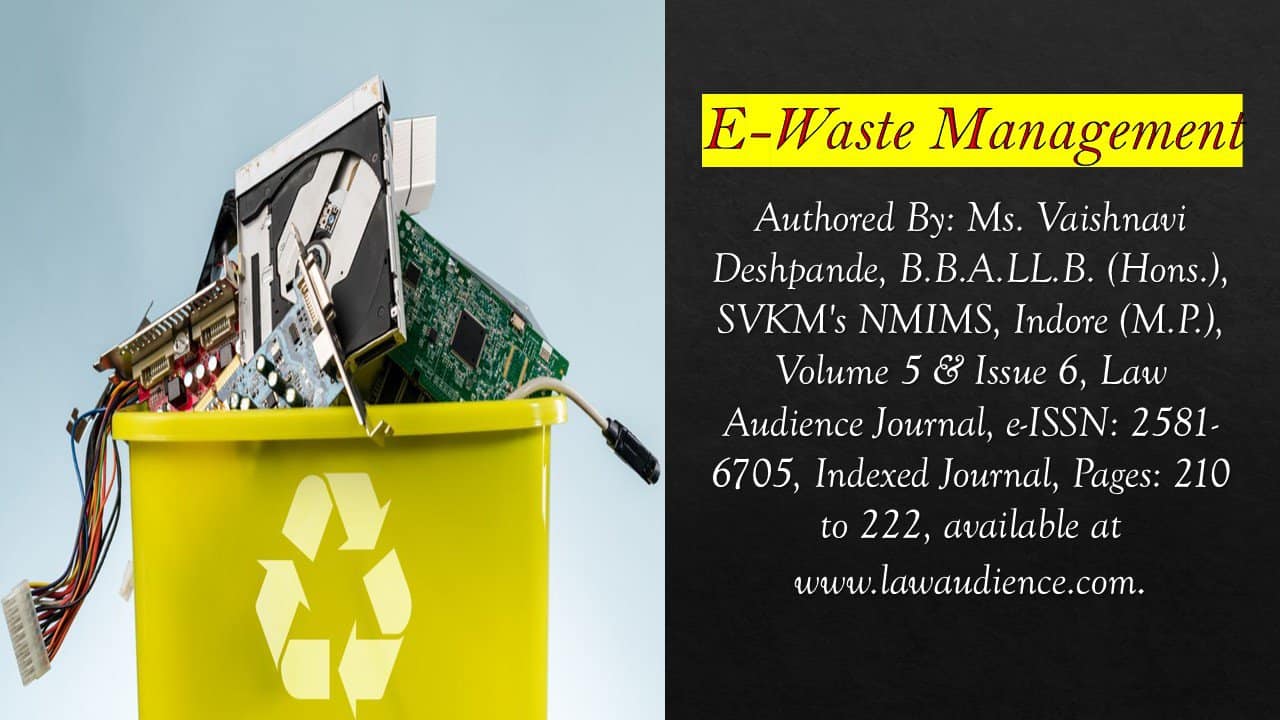Europe Industrial Waste Management Industry Report 2025-2033: EU Regulations, Circular Economy Policies and Rising Adoption of Waste-to-Energy Technologies – Yahoo Finance

Report on the European Industrial Waste Management Market and its Alignment with Sustainable Development Goals (SDGs)
Market Overview and Projections
The European industrial waste management market is projected to experience significant growth, driven by a strong commitment to sustainability and circular economy models. This expansion directly contributes to the achievement of several United Nations Sustainable Development Goals (SDGs). The market is forecast to grow from US$ 47.14 billion in 2024 to US$ 70.84 billion by 2033, reflecting a Compound Annual Growth Rate (CAGR) of 4.63% during the 2025-2033 period.
Alignment with Sustainable Development Goals (SDGs)
The market’s trajectory is fundamentally linked to advancing the 2030 Agenda for Sustainable Development. Key contributions include:
- SDG 12 (Responsible Consumption and Production): The primary driver for the market is the shift towards a circular economy, as promoted by EU policies like the Circular Economy Action Plan. This encourages waste minimization, reuse, and recycling, moving away from linear “take-make-dispose” models.
- SDG 9 (Industry, Innovation, and Infrastructure): Substantial investments are being channeled into developing resilient infrastructure and innovative waste processing technologies. This includes advanced recycling facilities and digital waste stream tracking systems that modernize the industrial sector.
- SDG 7 (Affordable and Clean Energy): The increasing adoption of waste-to-energy technologies serves as a method for waste reduction while simultaneously generating a source of clean energy, contributing to sustainable energy goals.
- SDG 11 (Sustainable Cities and Communities): Effective industrial waste management is critical for reducing pollution and environmental degradation in urban and industrial areas, making communities safer and more sustainable.
- SDG 13 (Climate Action): By diverting waste from landfills and promoting resource recovery, the sector helps mitigate greenhouse gas emissions, particularly methane, supporting climate action initiatives.
- SDG 17 (Partnerships for the Goals): Growth is supported by public-private partnerships and cross-border cooperation aimed at harmonizing waste management practices and achieving shared environmental objectives.
Key Market Drivers
- Stringent Environmental Regulations: EU directives, such as the Waste Framework Directive, compel industries to adopt sustainable waste management practices. This regulatory pressure ensures compliance with environmental standards and pushes companies toward achieving zero-waste goals, directly supporting SDG 12.
- Industrial Sector Growth: Expansion in manufacturing, construction, and chemical sectors generates higher volumes of waste. This necessitates efficient and responsible management solutions to decouple economic growth from environmental degradation, a core principle of sustainable industrialization under SDG 9.
- Focus on Sustainability and Circular Economy: Growing public awareness and corporate sustainability objectives are increasing demand for eco-friendly solutions. Businesses are investing in recycling infrastructure and secondary raw material recovery to align profitability with environmental responsibility.
Market Challenges
- High Cost of Treatment and Disposal: The operational costs associated with advanced and compliant waste treatment, particularly for hazardous materials, can be prohibitive for small and medium-sized enterprises (SMEs), posing a barrier to universal adoption of best practices.
- Operational and Regulatory Fragmentation: Despite overarching EU policies, significant variations in national regulations, waste classification, and infrastructure across member states create operational complexities and hinder the development of a unified, efficient market.
Strategic Investments and Initiatives
Recent investments underscore Europe’s commitment to sustainable waste management and the SDGs:
- The European Commission announced a €10 billion investment plan to enhance waste management infrastructure, with a specific focus on recycling and waste-to-energy projects (supporting SDG 7, 9, and 12).
- Veolia, a key market player, is investing €2 billion to expand its operations in Germany, utilizing advanced recycling technologies to improve resource recovery and reduce landfill dependency, in line with SDG 12.
Market Segmentation
Waste Type
- Industrial Waste
- Municipal Solid Waste
- Hazardous Waste
- E-waste
- Plastic Waste
- Bio-medical Waste
Disposal Methods
- Landfill
- Incineration
- Dismantling
- Recycling
1. Which SDGs are addressed or connected to the issues highlighted in the article?
-
SDG 7: Affordable and Clean Energy
The article mentions the growing popularity of “waste-to-energy technology innovation as a way to generate energy and reduce trash.” This directly relates to increasing the share of clean and renewable energy sources.
-
SDG 9: Industry, Innovation, and Infrastructure
The text highlights significant “investments in cutting-edge waste processing technologies” and efforts to improve “waste management infrastructure.” This aligns with the goal of building resilient infrastructure and fostering sustainable industrialization.
-
SDG 11: Sustainable Cities and Communities
The core theme of the article is industrial waste management. Effective management of industrial and municipal waste is crucial for reducing the environmental impact of cities and industries, as covered by this goal.
-
SDG 12: Responsible Consumption and Production
This is the most prominent SDG in the article. It emphasizes the shift towards a “circular economy model,” “waste minimization and reuse,” and the growth of “recycling infrastructure,” all of which are central to sustainable consumption and production patterns.
-
SDG 17: Partnerships for the Goals
The article notes that “public-private collaborations” are strengthening market capacities, which points to the importance of partnerships between governments and private companies to achieve sustainability objectives.
2. What specific targets under those SDGs can be identified based on the article’s content?
-
Target 7.2: Increase substantially the share of renewable energy in the global energy mix.
The article’s reference to “waste-to-energy initiatives” and “waste-to-energy technology innovation” directly supports this target by promoting energy generation from waste, a renewable source.
-
Target 9.4: Upgrade infrastructure and retrofit industries to make them sustainable.
The article discusses how industries are being forced to “make investments in cutting-edge waste management and recycling technologies” due to regulations. It also mentions a “€10 billion investment plan… to improve waste management infrastructure,” which aligns with upgrading infrastructure for sustainability.
-
Target 11.6: Reduce the adverse per capita environmental impact of cities, including by paying special attention to… municipal and other waste management.
The entire article focuses on the European market for industrial waste management, which is a critical component of reducing the overall environmental footprint of industrial and urban areas.
-
Target 12.4: Achieve the environmentally sound management of chemicals and all wastes throughout their life cycle.
The article highlights the need to manage “both hazardous and non-hazardous industrial waste while adhering to environmental regulations,” which is the core of this target.
-
Target 12.5: Substantially reduce waste generation through prevention, reduction, recycling and reuse.
This target is directly addressed through the mention of policies like the “Waste Framework Directive and the Circular Economy Action Plan,” which encourage “waste minimization and reuse” and investments in “recycling infrastructure” to “lessen reliance on landfills.”
-
Target 17.17: Encourage and promote effective public, public-private and civil society partnerships.
The article explicitly states that the market is being strengthened by “public-private collaborations,” demonstrating the application of this target in the waste management sector.
3. Are there any indicators mentioned or implied in the article that can be used to measure progress towards the identified targets?
-
Financial Investment in Sustainable Technologies and Infrastructure
The article provides specific financial figures that can serve as indicators. For example, the “€10 billion investment plan” by the European Commission and Veolia’s “€2 billion” investment in Germany for “cutting-edge recycling technologies” are quantifiable measures of progress towards upgrading infrastructure (Target 9.4).
-
Market Growth and Value
The projected growth of the Europe Industrial Waste Management Market from “$47.14 Billion in 2024” to “$70.84 Billion by 2033” at a “4.63% CAGR” serves as an economic indicator of the increasing scale of waste management activities, including recycling and recovery, relevant to targets under SDG 11 and 12.
-
Adoption of Specific Waste Management Methods
The article implies a shift in waste management practices. An increase in the adoption of “recycling” and “waste-to-energy” technologies and a corresponding decrease in “landfill” reliance are key performance indicators for measuring progress towards Target 12.5 (waste reduction) and Target 7.2 (clean energy).
-
Regulatory Compliance and Frameworks
The article’s emphasis on “stringent EU regulations” like the “Waste Framework Directive” and the “Circular Economy Action Plan” suggests that the implementation and enforcement of these policies are indicators of the commitment to environmentally sound waste management (Target 12.4).
4. Table of SDGs, Targets, and Indicators
| SDGs | Targets | Indicators |
|---|---|---|
| SDG 7: Affordable and Clean Energy | 7.2: Increase the share of renewable energy. | Increased investment in and adoption of “waste-to-energy” technologies. |
| SDG 9: Industry, Innovation, and Infrastructure | 9.4: Upgrade infrastructure and retrofit industries to make them sustainable. | Financial investments in waste management infrastructure and technologies (e.g., €10 billion EU plan, €2 billion Veolia investment). |
| SDG 11: Sustainable Cities and Communities | 11.6: Reduce the adverse environmental impact of cities, particularly in waste management. | Growth of the industrial waste management market (projected to reach $70.84 billion), indicating expanded services. |
| SDG 12: Responsible Consumption and Production | 12.4: Achieve environmentally sound management of all wastes. | Adherence to regulatory frameworks like the “Waste Framework Directive” for handling hazardous and non-hazardous waste. |
| 12.5: Substantially reduce waste generation through recycling and reuse. | Shift in disposal methods towards recycling and away from landfills; implementation of “Circular Economy Action Plan.” | |
| SDG 17: Partnerships for the Goals | 17.17: Encourage effective public, public-private and civil society partnerships. | Establishment of “public-private collaborations” to strengthen market capacities. |
Source: finance.yahoo.com

What is Your Reaction?
 Like
0
Like
0
 Dislike
0
Dislike
0
 Love
0
Love
0
 Funny
0
Funny
0
 Angry
0
Angry
0
 Sad
0
Sad
0
 Wow
0
Wow
0
















































/environment-climate-change-and-health-(ech)/water-sanitation-hygiene-and-health-(wsh)/landfill-tuvalu-36092.tmb-1200v.jpg?sfvrsn=5c21fe40_1#)

.jpg.webp?itok=0ZsAnae9#)

























